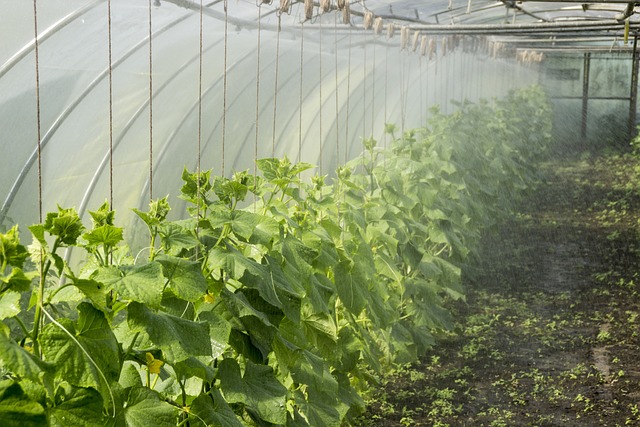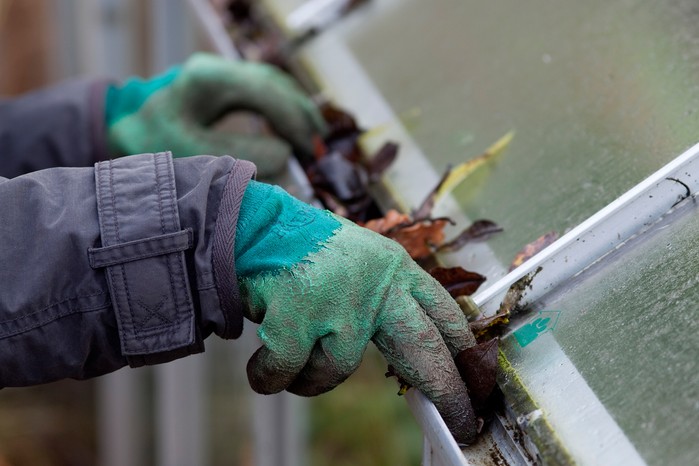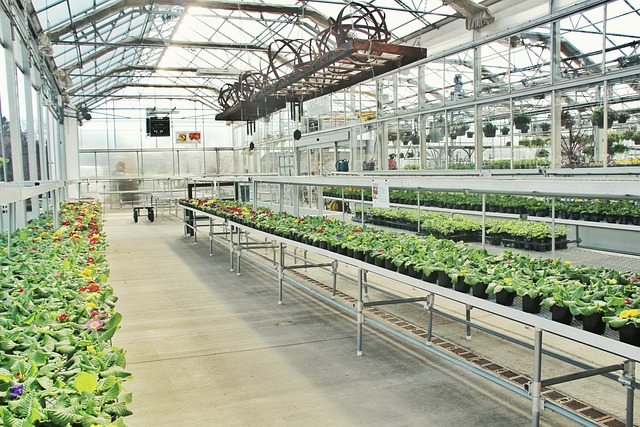In the morning, the sun makes my backyard all golden. I have a cool garden with lots of flowers and veggies. I also have a special house for my plants, called a greenhouse. It’s like magic because I can grow things in it all year long. But it wasn’t always like this.
It all started when a neighbor gave me a tiny tomato plant. I didn’t know much about gardening then. But that little plant got me really interested. I learned how to take care of my greenhouse, and it changed my backyard and my life.
If you want to know how to make a great greenhouse, you’re in the right place.
To maintain a greenhouse successfully, focus on temperature and humidity control, proper watering, soil quality, pest management, pruning, lighting, ventilation, insulation, and routine monitoring. Prepare for seasonal changes, keep records, ensure safety, and continue learning. Adapt these practices to suit your specific plants and local conditions for a healthy and productive greenhouse.
How to Achieve Effective Temperature and Climate Control in a Greenhouse?

Unlocking the secrets to effective temperature and climate control in a greenhouse is the key to cultivating thriving plants year-round.
Monitoring and Regulating Temperature:
Thermostats and Thermometers: Installing digital thermostats and thermometers is crucial for precise temperature monitoring. It allows you to set temperature thresholds and receive alerts if they are exceeded.
- Heating Systems: Depending on your climate, use electric heaters, gas heaters, or radiant heating systems to maintain the desired temperature during cold periods.
- Cooling Systems: In warm weather, employ cooling methods such as exhaust fans, shade cloth, and evaporative cooling to prevent overheating.
- Automatic Controls: Consider using automated systems that can adjust heating and cooling equipment as needed to maintain a consistent temperature.
Managing Humidity Levels:
- Hygrometers: Use hygrometers to measure humidity levels accurately. Ideal humidity levels vary depending on the plants you grow but generally range from 40% to 70%.
- Ventilation: Adequate ventilation is essential to prevent excess humidity. Exhaust fans and vents help remove humid air and replace it with fresh, drier air.
- Humidity Aids: Employ humidity aids like misting systems or humidity trays to increase humidity when necessary, especially in arid climates or during dry winter months.
Shading and Ventilation Strategies:
- Shade Cloth: Install shade cloth during the hottest months to reduce solar heat gain and protect plants from scorching. The cloth’s shading percentage can be adjusted as needed.
- Ventilation: Use adjustable vents and louvers to control airflow. Proper ventilation helps maintain an optimal climate by reducing temperature fluctuations and humidity buildup.
What Are Best Practices for Watering and Soil Management?
Mastering the art of watering and soil management is the cornerstone of successful gardening, and the path to flourishing, bountiful harvests.
Establishing a Consistent Watering Schedule:
Monitoring Moisture Levels: Use soil moisture sensors or a simple finger test to determine when to water. Avoid overwatering, as it can lead to root rot, and underwatering, which can stress plants.
Drip Irrigation: Moreover, implement drip irrigation or soaker hoses for efficient and targeted watering. This method reduces water waste and keeps the foliage dry, minimizing the risk of fungal diseases.
Choosing the Right Soil and Fertilization Methods:
Soil Selection: Select a well-draining and nutrient-rich potting mix suitable for the types of plants you are growing in your greenhouse.
Fertilization: Choose appropriate fertilizers, whether organic or synthetic, based on the specific needs of your plants. Follow recommended dosage and application instructions.
Slow-Release Fertilizers: In addition, consider using slow-release fertilizers for longer-lasting nutrient availability and reduced maintenance.
Soil Testing and Nutrient Management:
Regular Testing: Conduct soil tests periodically to assess pH levels and nutrient content. Soil testing kits or services can provide valuable insights into your soil’s health.
Nutrient Adjustments: Based on the soil test results, adjust your fertilization practices to provide the necessary nutrients for optimal plant growth. Avoid over-fertilizing, which can harm plants and leach excess nutrients into the environment.
How Can You Effectively Implement Pest and Disease Control?
Protecting your garden from pests and diseases requires a strategic approach that balances organic methods and responsible practices, ensuring your green haven thrives.
Regular Pest and Disease Monitoring:
Systematic Inspections: Perform routine inspections of your greenhouse plants to identify any signs of pests or diseases. Look for discolored leaves, wilting, unusual growth patterns, or the presence of insects.
Monitoring Tools: Furthermore, utilize sticky traps, pheromone traps, and hand-held magnifying glasses to aid in the early detection of pests like aphids, whiteflies, mites, and thrips.
Record Keeping: In addition, maintain records of pest and disease occurrences to track patterns and identify potential problem areas or recurring issues.
Implementing Preventative Measures:
Quarantine: Isolate new plants or those returning from outdoors in a separate area for a few weeks to monitor for potential infestations or diseases before introducing them to the main greenhouse.
Sanitation: Practice good hygiene by promptly removing dead plant material, fallen leaves, and debris, as they can harbor pests and diseases.
Crop Rotation: Rotate plant placements to prevent the buildup of specific pests or diseases in the soil.
Biological Controls: Consider the use of beneficial insects like ladybugs, parasitoid wasps, or predatory mites to naturally control pest populations.
Using Natural Predators and Organic Pesticides:
Beneficial Insects: Introduce natural predators that prey on common greenhouse pests. For example, ladybugs can help control aphids, while nematodes can combat soil-dwelling pests.
Biological Pesticides: Use organic pesticides like neem oil, insecticidal soap, or diatomaceous earth to target specific pests without harming beneficial insects or the environment.
Herbal Extracts: Experiment with natural remedies such as garlic or hot pepper sprays, which can deter some pests when applied regularly.
Organic Practices: Adopt organic farming practices, including companion planting and crop diversity, to reduce the likelihood of pest and disease outbreaks.
What Are the Key Techniques for Pruning and Training Plants?
Pruning and training plants are the horticultural techniques that sculpt and guide nature’s growth, unlocking the full potential of your garden.
Pruning Techniques for Optimal Growth:
- Deadheading: Remove spent flowers to encourage continuous blooming.
- Thinning: Thin out crowded branches or stems to improve air circulation and light penetration.
- Pinching: Pinch back young shoots or branches to promote bushier growth and more flower or fruit production.
- Diseased and Dead Parts: Prune and remove diseased or dead plant parts promptly to prevent the spread of diseases.
Training Plants for Better Airflow and Light Exposure:
- Staking: Use stakes or trellises to support tall or vining plants, preventing them from collapsing or blocking light to other plants.
- Espaliering: Train fruit trees or shrubs along a flat plane, optimizing space and light exposure.
- Topiary and Bonsai Techniques: Apply these methods to shape plants for aesthetic purposes while enhancing airflow and light distribution.
- Training for Vertical Growth: Employ vertical gardening techniques to maximize vertical space in your greenhouse.
What Are the Essentials of Lighting and Ventilation?
In the world of indoor gardening, the essentials of lighting and ventilation are the dynamic duo that breathes life into your plants’ growth.
Providing Adequate Natural and Artificial Lighting:
Natural Light: Orient your greenhouse to maximize exposure to sunlight throughout the day. Use light-reflecting surfaces like white walls or reflective films to distribute light evenly.
Supplemental Lighting: Install artificial lighting systems, such as high-intensity discharge (HID) lamps or LED grow lights, to provide consistent light levels during cloudy days or the winter months.
Light Duration: Moreover, ensure that plants receive the appropriate duration of light for their specific needs. Some plants require long daylight hours, while others need shorter periods of light and darkness.
Proper Ventilation Systems and Airflow Management:
Ventilation Design: Plan the placement of exhaust fans, vents, and louvers strategically to promote optimal airflow. Ensure that air circulates evenly around all plants.
Temperature Regulation: Furthermore, use automatic vent openers and fans to maintain temperature and humidity levels within the greenhouse. Install thermostats and humidity sensors for precise control.
Air Exchange: Periodically exchange the greenhouse air with fresh outside air to replenish carbon dioxide levels and prevent the buildup of humidity, odors, and pathogens.
Humidity Control: Use proper ventilation to reduce excess humidity levels and minimize the risk of fungal diseases.
How to Ensure Optimal Insulation and Seasonal Maintenance?

Optimal insulation and meticulous seasonal maintenance are the guardians of your greenhouse’s year-round productivity.
Winter Insulation to Conserve Heat:
Insulation Materials: Use materials like bubble wrap, greenhouse plastic, or thermal curtains to insulate the greenhouse during colder months.
Heating Systems: Upgrade or maintain heating systems to keep plants warm during winter. Install efficient heaters and insulation around heating pipes.
Preparing for Seasonal Changes:
Seasonal Plant Selection: Plan your plant selection to align with the changing seasons and adapt to temperature and light variations.
Adjustments: As the seasons transition, adjust watering schedules, humidity levels, and temperature settings to suit the needs of different plants.
Frost Protection: Be prepared for unexpected frost by having frost cloths or blankets on hand to cover sensitive plants overnight.
Cleaning and Sanitizing Between Seasons:
Deep Cleaning: Thoroughly clean all surfaces, including walls, floors, shelves, and equipment, to remove dust, debris, and potential pests or diseases.
Sanitization: Disinfect tools, pots, and trays to prevent the carryover of pathogens from one season to the next.
Repairs: Inspect and repair any damaged or worn-out greenhouse components, such as torn plastic or malfunctioning equipment.
FAQ’s
What equipment and practices are essential for greenhouse maintenance?
Temperature control, humidity management, watering schedules, soil care, pest control, ventilation, and regular monitoring are essential for greenhouse maintenance.
How do you manage and maintain a greenhouse effectively?
Effective greenhouse management involves maintaining the right climate, proper watering, pest and disease monitoring, pruning and training, and ensuring good lighting and ventilation.
What considerations are unique to outdoor greenhouse maintenance?
When maintaining an outdoor greenhouse, consider local climate conditions, wind protection, and selecting hardy plant varieties in addition to standard greenhouse practices.
What are the key steps in maintaining a mini greenhouse?
Maintaining a mini greenhouse involves ensuring good airflow, light, and temperature control, while selecting compact plant varieties suited to the limited space.
Why is greenhouse maintenance important for successful plant growth?
Greenhouse maintenance is crucial to provide a stable, healthy environment for plants, promoting optimal growth, disease prevention, and higher yields.
What are the essential features of a well-constructed greenhouse?
A well-constructed greenhouse has proper insulation, efficient heating and cooling systems, ample natural light, effective ventilation, and a layout designed for the specific plants being cultivated.
Final Words
In conclusion, maintaining a greenhouse has been an enlightening journey for me. Through diligent temperature and climate control, I’ve learned the importance of providing the perfect environment for my plants.
Vigilant pest and disease monitoring, along with preventative measures, have helped me keep my greenhouse thriving naturally. Pruning and training techniques have not only improved the aesthetics but also the health of my plants, allowing them to make the most of available space and light.
Ensuring proper lighting and ventilation has been pivotal in optimizing growth, and preparing for seasonal changes and practicing regular maintenance has become second nature. My monitoring and record-keeping efforts have allowed me to fine-tune my greenhouse management over time.
Lastly, prioritizing safety ensures that both my plants and I can enjoy the greenhouse environment without worry. All these aspects together have transformed my greenhouse into a haven of productivity and tranquility, reaffirming the joys of nurturing and connecting with nature under glass.

